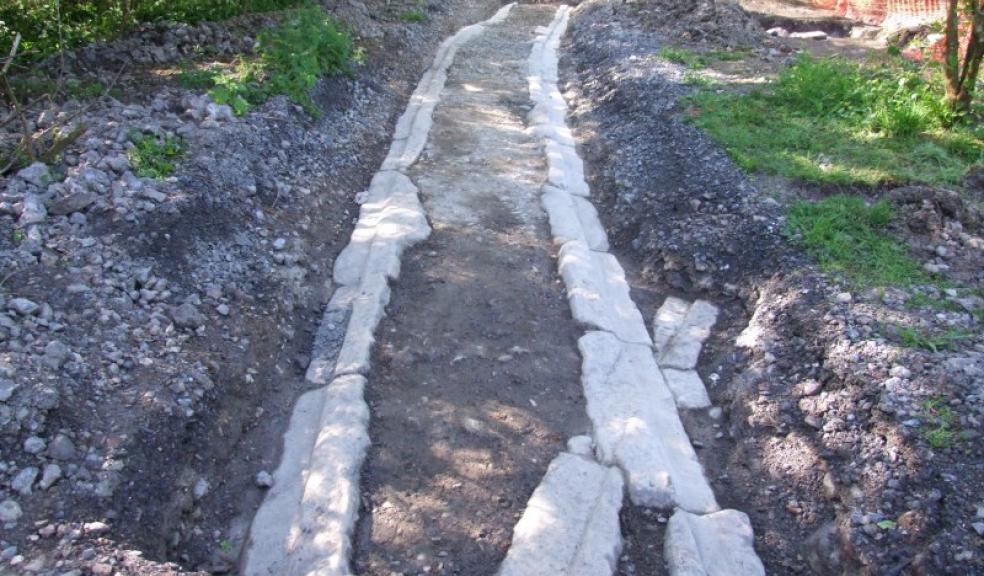
New evidence of the Haytor Granite Tramroad revealed
Archaeological excavations on the Stover Canal at Ventiford Basin have uncovered a 70 metre stretch of what is believed to be a siding of the Haytor Granite Tramroad.
The 12km tramroad was constructed in 1819-20 by George Templer of Stover, to move granite from the quarries at Haytor, on Dartmoor, down to the coast for shipment to London and elsewhere. At Ventiford, the tramroad linked up to the west side of the Stover Canal – built by Templer’s father James between 1790-2 – and from there the stone was carried by barge to Teignmouth, via the Teign estuary.
A small section of the newly-recorded tramroad siding was first exposed last December after contractors had started work on Devon County Council’s new cycle trail between Newton Abbot and Bovey Tracey.
Further excavations have been carried out more recently which have since revealed an intact 30 metre section. A further 40 metre track has been confirmed by test trenching using a mechanical excavator, and by ground-penetrating radar (GPR), funded by Devon County Council and provided by SWH Civils, the contractor currently working on the cycle trail.
Dr Phil Newman, Archaeologist, Stover Canal Trust, said: “Although long and impressive sections of the tramroad survive in situ within Dartmoor National Park, at Haytor Downs and at Yarner Nature Reserve, until now it was believed that the track had been lost between Bovey Tracey and Ventiford, following the construction of the Moretonhampstead branch railway line in the early 1860s. This had followed the course of the disused tramroad, completely effacing it. However, this amazing find at Ventiford now provides the only surviving section of the tramroad outside the national park.”
Councillor Stuart Hughes, Devon County Council Cabinet Member with responsibility for cycling, said: “The proposed route of the cycle trail would have permanently covered the remains of the granite tramroad, but it is now hoped that the trail can be slightly re-aligned to allow for the tramroad to be fully revealed. We’re working with the Canal Trust towards a plan to display the remains to the public as part of the canal’s interpretation scheme.”
Councillor George Gribble, local County Councillor for Bovey Tracey rural, said: “This has been a great find and is an important discovery for the Stover Canal Trust. I’m pleased that the tramroad is going to be preserved; it will provide a wonderful education resource for children to know the history and heritage of our locality. Good progress is also still being made on the trail which will also be a tremendous asset to the area.”
The tramroad is internationally renowned and is a unique monument to industry, because the track was built from elongated granite blocks placed end to end, with flanges along the rails to guide the wheels of the trucks, rather than using the more traditional iron rails with flanged wheels on the vehicles.
The archaeological work at Ventiford canal basin is being undertaken by the Stover Canal Trust (SCT) as a community project, with local volunteers working under the direction of Dr Phil Newman. It is funded by the Council for British Archaeology’s Mick Aston Archaeology Fund. Other aspects of the project this year have included partly uncovering the remains of a wooden barge, which was hulked in the canal basin in the 1870s, as well as excavation of two ruined buildings and an area of the quayside.
Work on the section of the trail from Bovey Tracey to Newton Abbot is expected to be completed by the end of next month, at the same time as the A38 bridge at Heathfield.











